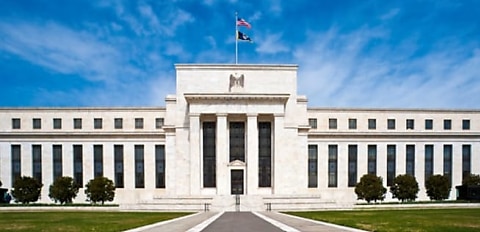The Federal Reserve has published its latest Senior Loan Officer Opinion Survey on Bank Lending Practices (SLOOS), reporting a tightening of lending standards and weakening demand for credit over the first quarter of 2023.
Of the banks surveyed by the Fed, 46.1 per cent reported “somewhat” or “considerable” tightening of lending standards for commercial and industrial (C&I) loans to medium-sized and large businesses and 48.1 per cent noted tighter conditions for small-business credit.
When asked why their standards tightened, a majority share of respondents cited a less favourable or uncertain outlook (93.7 per cent), a deteriorating risk appetite (74.5 per cent), worsening industry conditions (55.8 per cent), and a deterioration or expected deterioration in their liquidity position (53.2 per cent).
For lending to households, 73.8 per cent of respondents noted tighter standards for the provision of credit used for construction or the purchase of land, with 66.7 per cent of surveyed banks noting tighter lending for residential property transactions.
Supply-side tightening was compounded by subdued demand from borrowers across the same categories.
Approximately 65 per cent of surveyed banks flagged weaker demand among medium and large firms, with demand among smaller businesses also weaker over the quarter (61.7 per cent).
Weaker demand was more evident for lending to households, with 72.1 per cent flagging subdued flows for credit used for construction and the purchase of land and 79.4 per cent noting weakness for home loans.
Reflecting on the Fed’s latest quarterly survey, James Knightley, chief international economist at ING Economics, said tighter lending standards could “compound” the recessionary risks linked to aggressive monetary policy tightening.
“The data suggests a sharp slowdown in lending growth is coming with upside risks to unemployment,” he said.
“This is a hugely important story as potential borrowers are already feeling the effects of 500 bp of Federal Reserve interest rate hikes, the most rapid and aggressive phase of monetary policy tightening experienced in more than 40 years.
“With banks tightening lending standards so aggressively, this combination of higher borrowing costs and reduced credit availability is typically toxic for economic growth.”
Mr Knightley also flagged the “dry up” in demand among borrowers, which he said has hit pre-GFC levels.
Ultimately, these trends suggest “recessionary forces are building in the economy”, with Mr Knightley noting a drop in the supply of credit typically leads to a surge in unemployment.
“What turns struggling business into failed business is when the bank pulls the plug, the company runs out of options,” he said.
“Job losses are the inevitable consequence.”
Mounting evidence of a looming recession may prompt the Fed to bring forward rate cuts.
Fed chair Jerome Powell recently stated cuts “would not be appropriate” in the context of slower-than-expected progress towards the inflation target, but according to Mr Knightley, a looming recession could accelerate disinflation.
“The upshot is that a heightened chance of recession means a greater chance that inflation falls more quickly, and the Fed can eventually respond by moving monetary policy to a more neutral setting,” he said.
“The market is currently pricing around 20 bp of Federal Reserve interest rate cuts by September and 66 bp by December.
“We think September is likely to be too soon but will end up cutting interest rates more aggressively, at least in the early stages.”
ING Economics is projecting 50 bps in rate cuts in November and December, before more aggressive easing in 2024, which would take the federal funds rate back to 3 per cent by the middle of the year.
The Fed’s latest lending statistics came amid continued banking sector volatility, sparked by the collapse of four US financial institutions — First Republic, Silicon Valley Bank, Signature Bank, and Silvergate Capital — and the demise of Swiss giant Credit Suisse.
The Federal Deposit Insurance Corporation (FDIC) released a report last month relating to its supervision of Signature Bank in the lead-up to its failure and subsequent acquisition by local peer New York Community Bancorp.
Conducted at the request of FDIC chair Martin J Gruenberg, the report identified the causes of Signature Bank’s failure and assessed the FDIC’s supervisory program.
According to the review, the “root cause” of Signature Bank’s failure was “poor management”, linked to the board of directors and management’s pursuit of “rapid, unrestrained growth”.
This pursuit reportedly lacked “adequate risk management practices and controls appropriate for the size, complexity, and risk profile of the institution”.
Reflecting on the FDIC’s own supervision, the review noted the regulator conducted several targeted reviews and ongoing monitoring; issued supervisory letters and annual roll-up reports of examination (ROEs); and made a number of supervisory recommendations to address concerns.
However, the FDIC has conceded it could have “escalated supervisory actions sooner” and acknowledged the need for “timelier” and “more effective” communications with Signature Bank.
But Fed chair Mr Powell has insisted the banking system remains “sound and resilient”.
